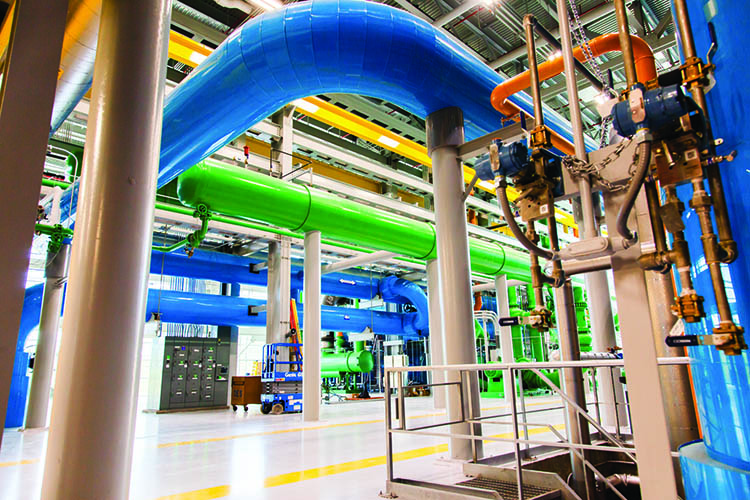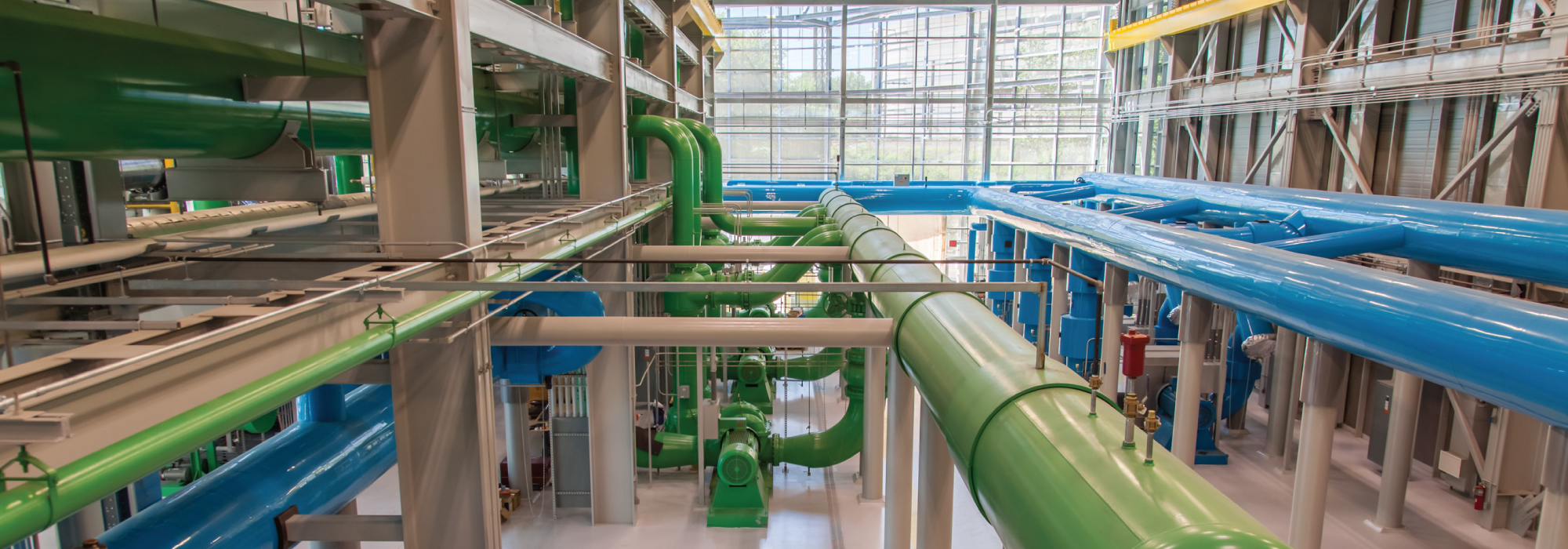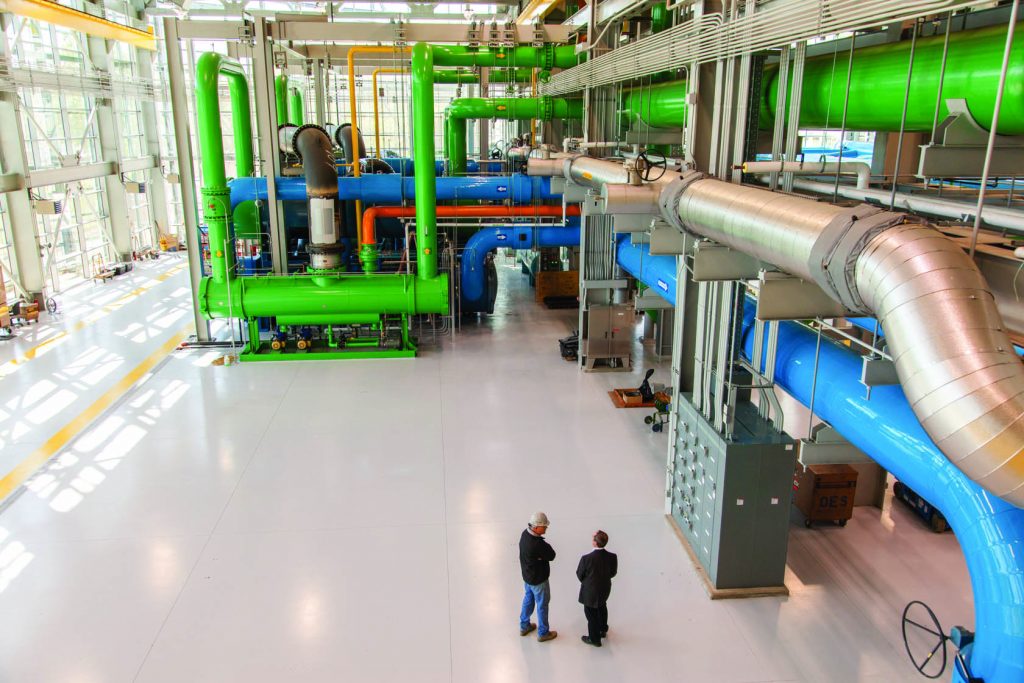Keeping the University of Pennsylvania Cool
As every homeowner knows, turning on the air conditioning means a huge spike in the electric bill—particularly through the dog days of summer. Now imagine what an urban college campus must generate to keep its buildings comfortable. Efficiency is critical.
As the University of Pennsylvania has grown in enrollment, it’s expanded its West Philadelphia campus to more than 200 buildings over 300 acres. Its necessary infrastructure has followed suit, including a recent expansion of the Module 7 chilled water plant, which now provides 40,000 tons of cooling to air condition nearly 180 university buildings.
“Many buildings have a small chiller plant within the building itself,’’ says Ken Innella, LF Driscoll vice president. “But having a centralized, stand-alone facility like this to support such a wide network of buildings is much more efficient. The sheer size of this massive Penn facility is impressive.”
The new chillers and expanded building not only increase the plant’s cooling capacity by 25%, but also help the university meet another important objective: reducing its reliance on electricity.
The two new 5,000-ton chillers run on steam, meaning air conditioning won’t overtax the campus’ electrical demand, particularly during peak summer months. PECO Energy also gave Penn large grants for installing non-electric equipment as incentives to avoid adding to the electrical infrastructure and to install optimization software in the existing plant.
To add steam to the traditionally electrically-powered plant, our LF Driscoll team had to install 1,225lf of piping to connect the chillers to the campus’ existing Veolia steam lines. To make matters more complicated, this installation involved coordinating around Penn’s heavily used baseball field—plus under a Center City railroad. Since the railroad wasn’t going to stop running, our team had to install the piping under the tracks without disturbing the surface, using a method called “jack and bore.” The team essentially dug a hole, or pit, on each side of the track and then used a boring machine and auger to push through the ground horizontally, from one pit to the other. Each time a train approached, flag men alerted the crew to halt boring until the train passed.

The building was designed by Leers Weinzapfel Associates, and engineer Trefz Engineering led the system design efforts. In 2006, this same LF Driscoll/Trefz project team worked with Penn to add two variable frequency drive (VFD), 5,000-ton chillers to the plant which, at the time, were the most efficient and base-loaded chillers in the facility.
With its added chilling capacity and fully automated and optimized plant controls up and running, the university expects to save significantly on utility costs. And they’re not done yet—there’s room for two more chillers to continue supporting the Penn community.

